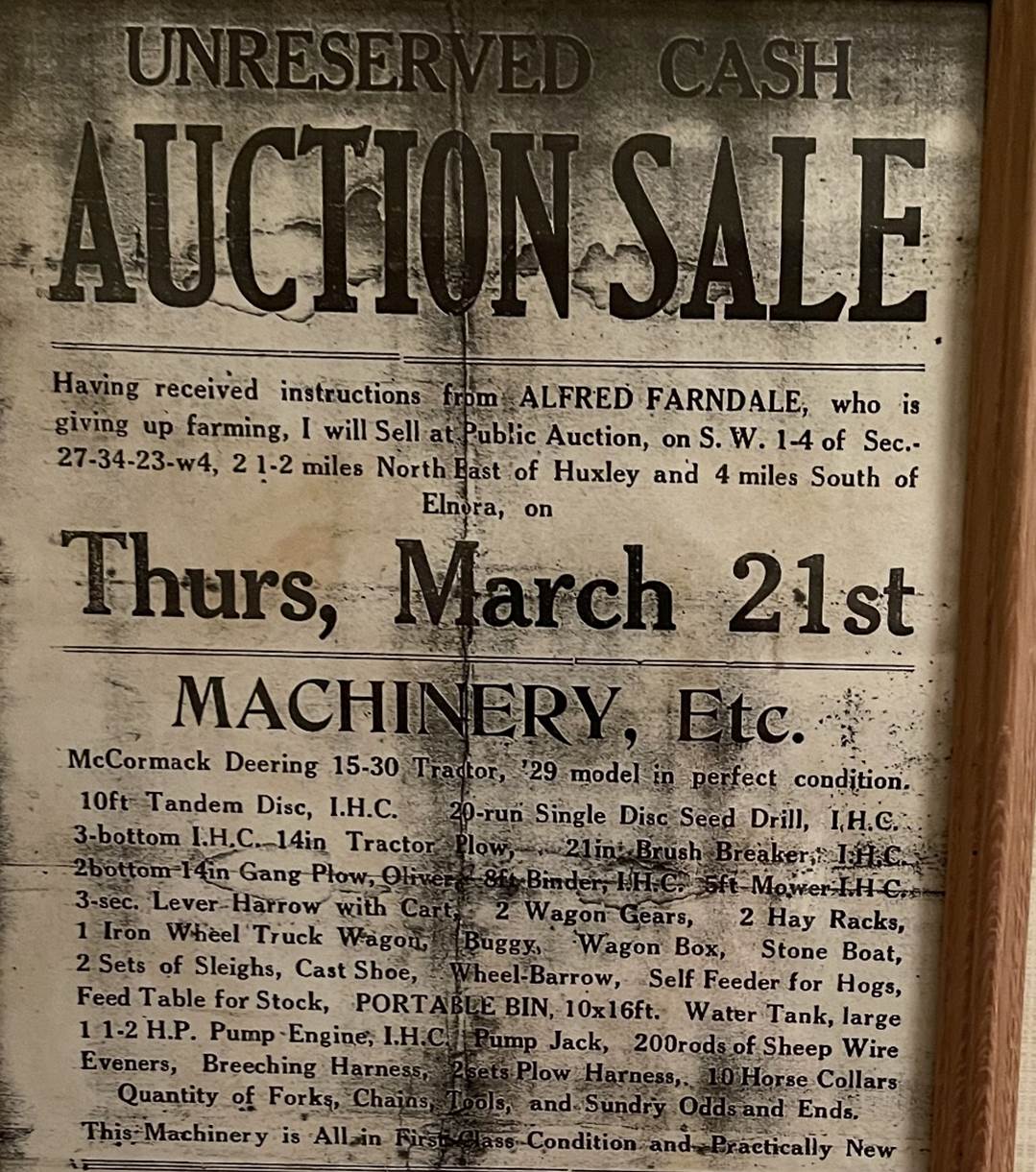|
|
Margaret Louisa Baker (“Peggy”) later Farndale 24 February 1901 to 17 November
1996
BAK00002
|
|
|
The home page of the Farndale family website of which this section is a part |
|||||||||||||||
|
The Home page of the Baker family part of the website |
The Baker Family directory |
Notes on the Baker family history |
The Baker Family Tree, which is the best way to search the Baker family history |
|
|||||||||||
Headlines of Peggy Baker’s life are in brown.
Dates are in red.
Hyperlinks to other pages are in dark blue.
References and citations are in turquoise.
Context and local history are in purple.
Margaret Louisa Baker was born in Audlem in Cheshire on 24
February 1901. Her father was Arthur Baker (1860 to
1916)(BAK00155), who was 41 when Margaret was born.
Her mother was Marianne (nee Hall) Baker (1869 to 1908)(HAL00103), who was 31 when she was born. Her
grandson, Nigel Farndale, many years later remembered that Peggy would say
“I was born on St Matthias’ Day, you know” and then add with a mischievous grin
and a roll of the eye, “Haven’t a clue who St Matthias was though!”
Margaret had an older sister, Hilda
Marianne Baker (BAK00170), who was born in 1899, so was nearly
two years older. Her younger brother, Geoffrey Richard Farndale (BAK00172) was born in 1904.
In the year that Margaret was born, the census recorded that the family were living at
Swanbach Villa, Audlem, Cheshire. Arthur Baker was head of the family, aged 41,
‘living on his own means’, with his wife Marianne, aged 31. Living with
them were Hilda Marianne Baker aged 1, Margaret Louisa Baker aged 1 month, and
Maude Whiston, a servant.
1905





Margaret Baker with
Hilda in about 1905
Arthur Baker with Hilda and Margaret in about 1905 Hilda And Margaret Baker in
about 1906
Arthur and Marianne Baker with Margaret and
Hilda about 1906 Margaret
Baker
1907
We have an
early letter to Margaret from her mother, Marianne, which must have been in
about 1907 or 1908. Nordrach House at
Charterhouse on Mendip was a former tuberculosis hospital, so she must have
been ill when she wrote.


1908
Marianne, died on 16 May 1908 at Swanbach Villa, when Margaret was
only seven years old. What a shock it must have been for the
young family to lose their mother so soon.
1910
Nevertheless, by 1910, there were garden
parties and ‘heaps of tennis’ going on, as recorded in a card to Kit Lynham (LYN00002), Margaret’s cousin, though Margaret
was still only nine then.


1911
By the 1911
census, the family were still living at Swanbach Villa, Audlem,
Cheshire. Arthur Baker was head of the family, 51, living on his own means, a
widower. Living with him were Hilda Marian Baker (1899 to 1979), who was 11,
Margaret Louisa Baker, aged 10, Geoffrey Richard Baker (1904 to 1974) aged 6,
with Mary Alice Baker, aged 27, and also a housekeeper and two servants.


Swanbach
Villa, Green Lane, Audlem (an early seventeenth century farmhouse, with
nineteenth century additions)
The
family later lived at Hillside, Audlem.


Hillside, Audlem
and Peggy re-visiting in about 1990
1915
We have a
letter to Margaret and Hilda from her father in perhaps about 1915:



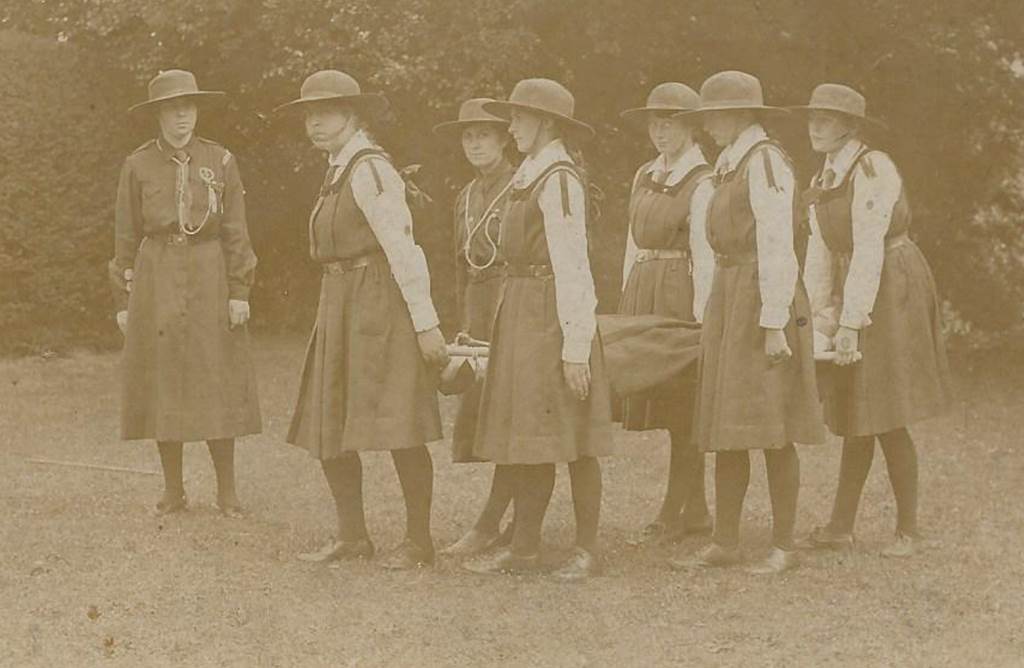

Margaret and the girl guides
Annotated “Margaret Baker – you do look ‘ripping’ ahem! – I sent one
to a friend of yours.”
1916
Margaret Baker went to school in Southampton, leaving there in
about 1916.
Tragically, Margaret’s father, Arthur Baker, died in his sleep in
1916, aged only 57, and was discovered by
Margaret’s brother Geoffrey. Margaret had been to early communion at church
with their housekeeper, Miss Healing. So Margaret, her sister Hilda and younger
brother Geoff, had lost both their parents by that young age. Margaret was only
15 when her father died.
Nigel
Farndale,
her grandson later reflected that She must have had a sad childhood, marked
by the early deaths of her parents. Yet, for all her formal upbringing in
Cheshire, under the severe gaze of those she referred to only as “The Aunts”,
she developed a spirit of rebellion, independence, and cheerfulness that was to
characterise her life.


“The Aunts”
The rather eccentric Aunts were known as
the “Miss Bakers” and comprised Henrietta (known, for some reason, as Aunt
Poppie)(BAK00150), Charlotte (Aunt Tottie)(BAK00157) and Aunt Emily (BAK00158). They were all Arthur Baker’s sisters
and they lived together at the Cedars, with Peggy’s equally eccentric Uncle
Dick (BAK00154), a local solicitor, known for his
flamboyant fun making of the local hunt. On the Hall side of her family, there
was also Aunt Catherine (Lynham)(HAL00100).
1918
By 1918, despite the challenges of the
last few years, Margaret was a prefect. Her Aunt Charlotte (“Tottie”) (BAK00157) wrote to her on her seventeenth
birthday, You do seem to have plenty of fun what with the games and the
Guides. You are an important lady now being a prefect! It sounds as if it must
have something to do with Rome. Well done getting first in class.




Margaret Baker, head girl at school (centre right)
Margaret Baker soon became known, almost always, as ‘Peggy” or
“Peggie”. Her second name was Louisa, a widely
used Baker name passing down from Henrietta Louisa Bellyse, the wife of William Baker the Younger
(BAK00121), but she preferred Louise, so when she
referred to her middle name, that is what she used.


“Heaps of tennis”
1919

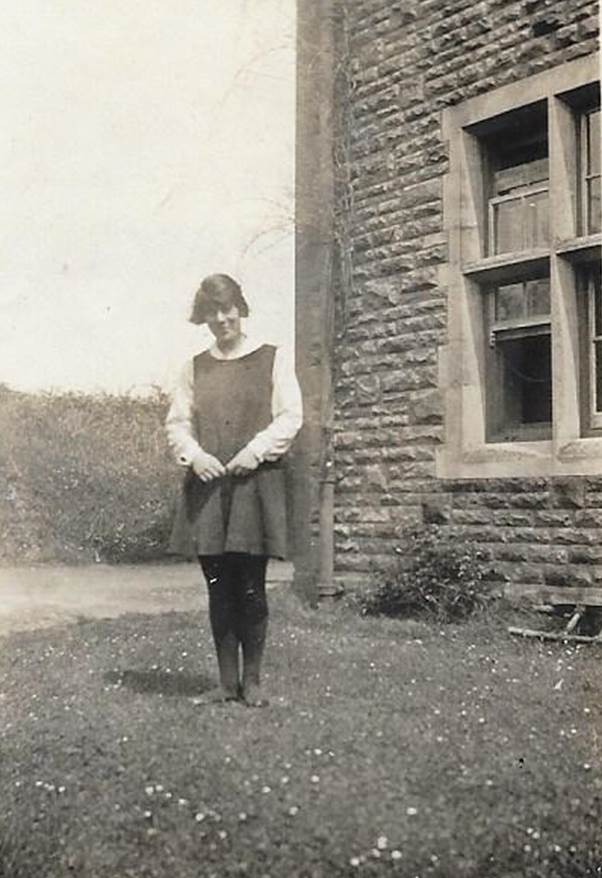

Peggy at about 18, perhaps in about 1919
Peggy went to a girls’ training college at Southport
and we know that she was there by 1919, and in 1921. We think that it was here
that she qualified as a physical training and English teacher.
She had the support of the vicar of
Audlem:

We have this letter to Margaret when she
was at training college in Southport from her grandfather, James Hall in 1919:

1920
She was the physical culture mistress at Wintersthorpe,
Birkdale from September 1920 to December 1921:

1923
She was a temporary gymnastics and games mistress at West Bank
School, Bideford in March 1923. The
West Bank School, a private school for girls, opened in Lansdowne Terrace,
Bideford, in 1896. The school moved to Enderleigh, Abbotsham Road in 1898 and
four years later, moved into West Bank, a newly built house on Belvoir Road.




Peggy in the 1920s
Peggy
with Geoff Baker
We know that Peggy then went to teach at Malvern Girl’s College
(“MGC”) in Malvern. There is also a suggestion that she went to Monmouth
Girl’s College for a time, but this might have been a reference to Malvern
which is relatively close to Monmouth. We are pretty sure that she was teaching
at the college from about 1924 to 1926, but it may have been for a shorter time. Malvern Girls' College was founded in 1893 by Miss
Greenslade and Miss Poulton, and was first located in College Road. In 1919
they acquired the Imperial Hotel and in 1934, a major extension including an
assembly hall was built. Barbara Cartland (1901-2000), the novelist, is an
alumni of Malvern Girl’s College, but as she was the same age as Peggy, they
probably did not quite overlap.



These photographs are labelled “SPTC”
and “SPTC Interior” and may have been somewhere where Peggy taught. The third
photograph is obviously of a gym, perhaps where Peggy taught physical
education. The middle photograph may have been the common room.
It was while she was at Malvern that she became friendly with Grace
Farndale (FAR00659), who was a matron. They used to travel
a lot together and Peggy had a car, which was quite something at the time.







The photo of four girls balancing is marked “Bakerloo” on the back

A postcard from Peggy’s
collection
Peggy’s grandson, Nigel Farndale later
admired her trend setting spirit. She was, after all, the
first of her peers to have her hair cut short in the flapper style; and the
first to buy a car which she said she never learned to drive properly because,
with no other traffic on the road, there was no need.

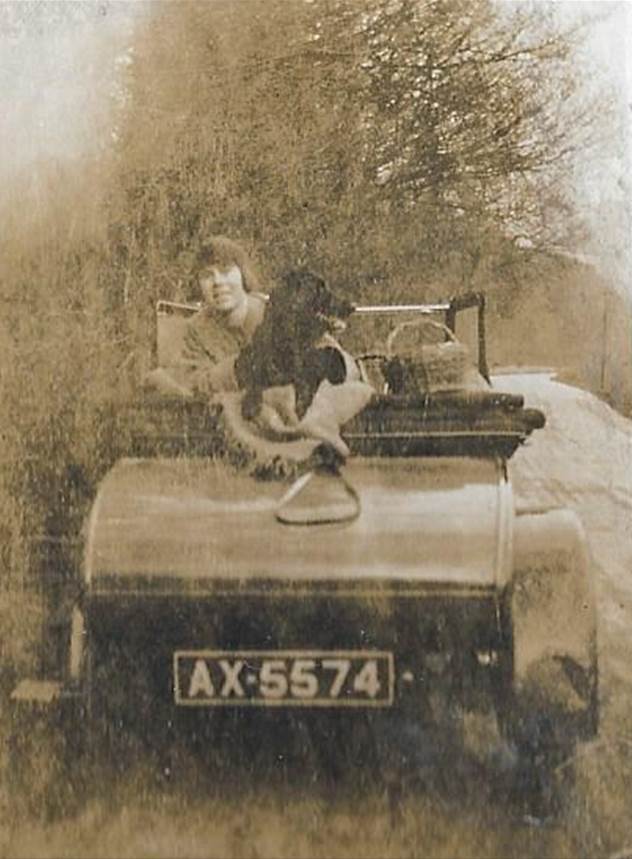

Peggy’s car, bought in Darlington in
about 1926, with Grace Farndale in the back seat.
1927
One of “The Aunts”, Catherine (nee Hall)
Lynham (HAL00100) wrote in a letter to Peggy in 1927 “how
you young people rush about in cars astonishes me”.
Peggy was a pioneer in a new age of self expression by women.
Her grandchildren are in awe at some photographs of their trend setting Granny,
caddying for golf sometime in the 1920s:




She travelled widely with Grace









A trip to Scotland

Skiing
We know that Peggy did not like the
Headmistress at Malvern. Grace and Peggy got so fed up that they decided to go to Yorkshire
and start a chicken farm near to where Grace’s elder sister, Lynn
(nee Farndale) Barker (FAR00564) lived, at Scorton, near Richmond.



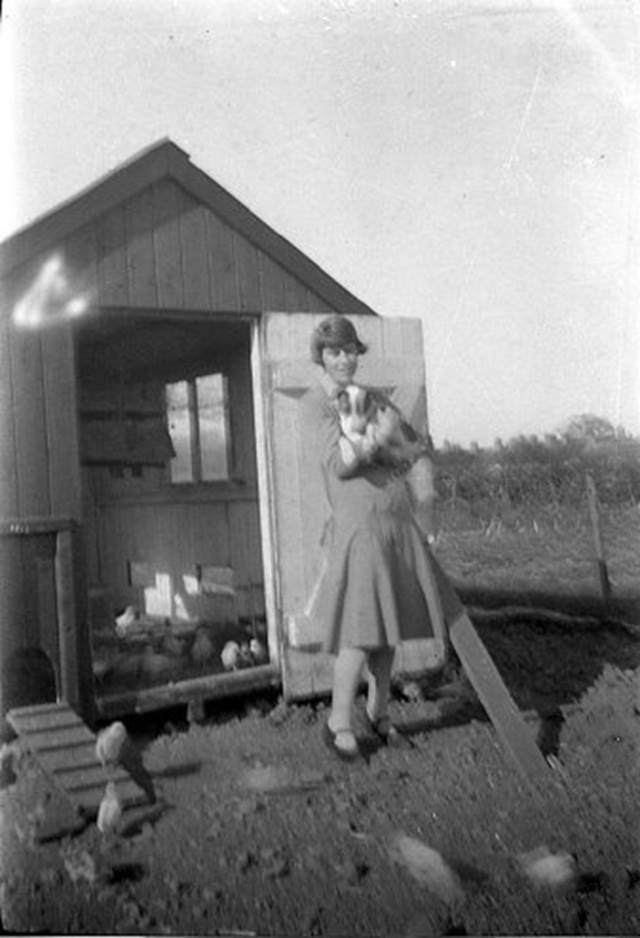

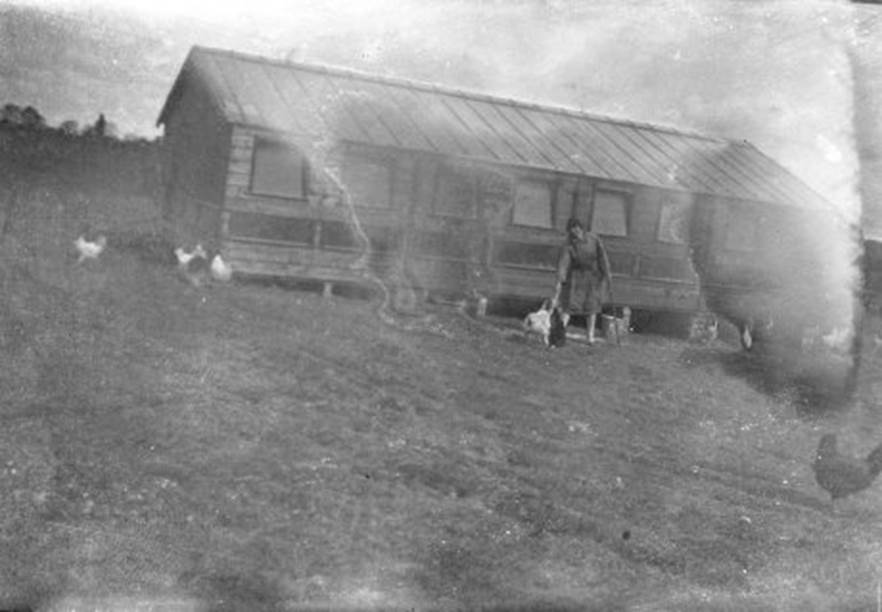
The poultry farm at
Scorton.
After moving to Yorkshire, Peggy met
Grace’s younger brother Alfred Farndale (FAR00683).





Peggy Baker became engaged to Alfred Farndale in 1927.
“The Aunts” felt protective of Peggy and Catherine (nee
Hall) Lynham (HAL00100) wrote in a letter to Peggy in 1927:
“I
was glad to get your letter and to hear something about Alfred Farndale. Of
course I am very pleased to know that you are happy, but I wish some of us knew
the young man. I hope he is really good enough for you in every way. For you
know I think a lot of you and it is a big thing to get engaged. However I do
hope you have acted wisely. You ought to be able to know your own mind. I am
sure you have my hearty congratulations and I shall look forward to seeing your
Alfred. Kit is rather funny about it; she likes the name Alfred about as much
as Edgar or Cyril.”



And, in a rather more endearing note
from her Aunt Poppie on the Baker side (one of the eccentric ‘Miss Bakers”) (BAK00150):



Peggy’s uncle, Colonel Arthur John Hall
(HAL00102) also wrote to congratulate her on her
engagement, a little more formally (though he quickly turned the subject to the
shooting season):

But Aunt Catherine need not have
worried, and Aunt Poppie was rather nearer to the mark, for the marriage which
would then last sixty years until Alfred died, provided the happy and solid
foundation for the large family which grew from their union. Nigel Farndale
later commented, the story of how she married her war hero and went on to
live the pioneer life in the prairies could have come straight out of a
romantic adventure novel.
1928
Alfred Farndale, aged 29, the son of Martin Farndale (deceased),
married Margaret Louise Baker, spinster of Leeming Bar daughter of
Arthur Baker JP (deceased) at Bedale Parish Church, on 16 March 1928.





Alfred and Peggy Baker
at their wedding in March 1928.
Bedale Church, December 1986
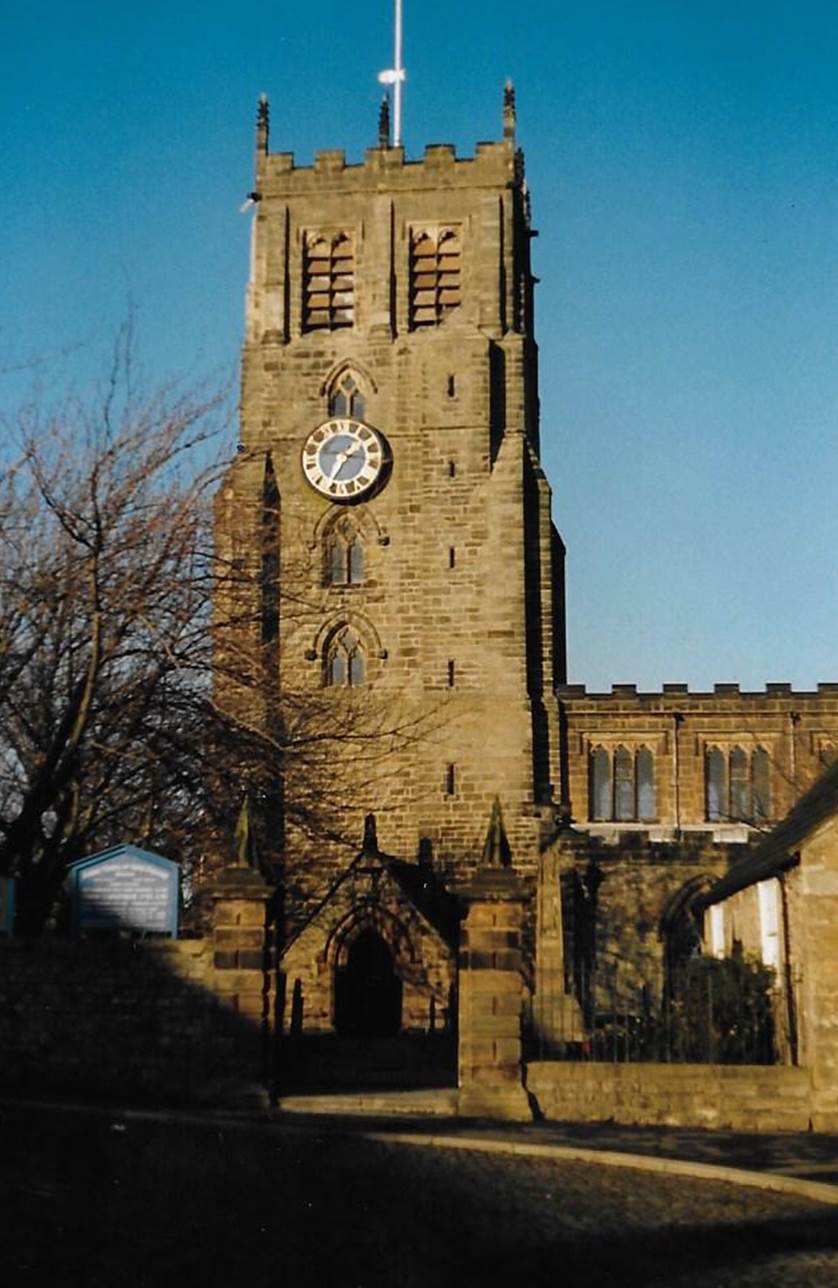



Bedale Church in
December 1986
Bedale Church interior in 2023
Almost immediately from
their wedding, Peggy and Alfred left for Western Canada, to join Alfred’s elder brothers and they took a farm about
a hundred miles north of Calgary.



Peggy on the voyage to Canada shortly
after they were married in 1928.

A telegram from Peggy’s siblings Hilda
Baker (BAK00170) and Geoff Baker (BAK00172)
1929
Alfred and Peggy had four children,
Martin Baker Farndale, born in Trochu, Alberta on 6 January 1929) (FAR00911); Marianne Catherine Farndale (later
Shepherd), born on 30 October 1930 in Trochu (FAR00915); Alfred Geoffrey Farndale, born in
Trochu on 10 April 1932)(FAR00922) and Margaret Lindsey (“Margot”)
Farndale (later Atkinson). born after the family had returned from Canada at
Thornton-le-moor, North Yorkshire on 8 October 1937 (FAR00952).


Peggy in Huxley, Alberta, Canada The house at Huxley, Alberta
1934

Holidays in the Rockies and Sylvan lake
in about 1934
1935
Alfred and Margaret Farndale, after
emigrating to Canada in March 1928, remained there until 1935. The slump of the
late twenties and early thirties was crippling and the family was forced to
return to England in 1935. Martin Farndale later
recalled But things were not well on the farm. Prices were bad in the slump
years of the early 30s and the weather was unkind so that my father, along with
many others, soon lost all his savings, and in 1935, he decided to return to
England. I remember well the excitement of the farm sale by our white house
with a black roof, on the hill overlooking Huxley. It was early April and it
was cold with snow still on the ground. We spent our last few days in Alberta
with Aunt Grace and Uncle Howard at their Ranch near Huxley and finally caught
the train at Huxley for Edmonton on 9 April 1935.
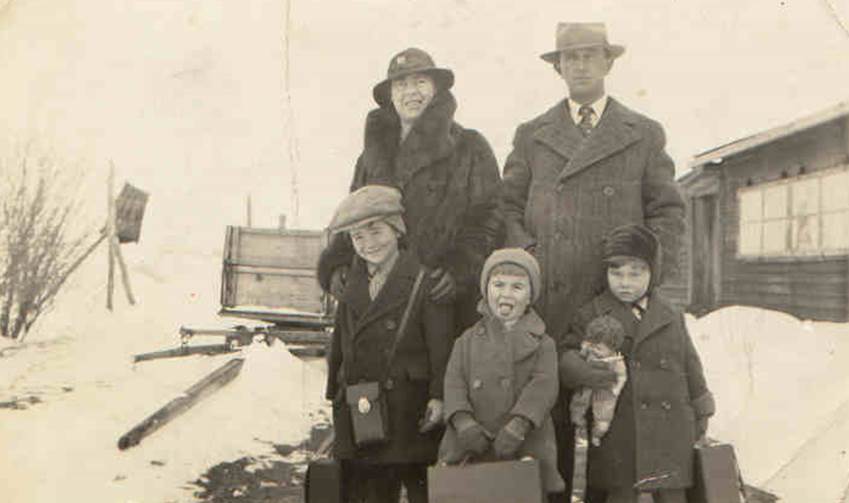
The return from Canada
1940
On their return to England Alfred farmed first at Middleton-One-Row,
near Darlington, then at Thornton-le-Moor until 1940. They then lived in
Northallerton until 1943.
My
father was working very hard indeed at this time. It was hard physical graft
and very long hours, but there was plenty of work as farmers grew all they
could. Sometimes I went with him and I learnt how to plough on his Massy-Harris
tractor. We once ploughed in one of the fields from our old farm at
Thornton-Le-Moor where I remembered doing some ploughing with a pair of horses
some year before. Frequently on Thursdays I would cycle out to an agreed point
and await my father with his threshing crew to bring the men their wages. But all this time my father was trying to get
another farm. He went to many, was short listed for some, and turned others
down. I went to some with him at weekends and I remember sharing is hopes and
disappointments. It was a difficult but exhilarating time. There was not much
money, and a lot of hard work. We had always had a car at this time. We had a
1937 Morris 12 which, in 1942, my father exchanged for a Standard 12 which he
got from our doctor, Doctor Milne.
The 1939 Register recorded
the family living at Sycamore Lodge, Thirsk. Alfred Farndale, born 5 July 1897,
was a farmer (mixed); Margaret Louisa Farndale, born 24 February 1901; Martin,
Ann, Geoff and Margot, and Lerna E Gerrard (later married Hutchinson), single,
born 6 February 1918, paid domestic duties.
Peggy was the heart of a happy family.
Martin later recalled about the early days of the Second World War: About
this time there was much going on that I didn’t understand. My mother would
come and sit with me as I went to sleep at night and these moments became
highlights of those days. I adored her, she seemed to understand everything and
she never failed to set my mind at rest whatever my problems. I owe her a great
deal indeed. She ensured that we grew up with balance and understanding of
other people.


Peggy with her four children
1942
Alfred then took the
tenancy at Gale Bank Farm, Wensley. Martin recalled Towards the end of 1942, I came home
from school one day to be told by mother that it looked as if we had got a farm
near Wensley in Wensleydale.
Throughout the Second World War, Alfred
served as a Special Constable.
1963
A Holiday in Italy
We left Darlington about 2 pm for London
on Saturday 15th June. The train was packed and it was very hot, but we managed
to get into a compartment and had it to ourselves ‘til we reached London at
6:40 pm. We got a room at the Great Northern. It was rather expensive, but we
took it as by the time we had gone round by taxi seeking something cheaper, it
might have cost us a lot more. We had a very comfortable night and after
breakfast had to get our luggage to Victoria. It was a bit of a scramble with
our cases on the Underground, but we eventually got there by 11.20. We then
went for a bus ride around London, had our lunch, and back to Victoria and met Umberto
Skinymo at 2.00 pm. The train didn't leave for
Folkestone ‘til 3.45. We arrived at Folkestone about 6.00 pm and left by
steamer about 7.00 pm and arrived at Boulogne at 8.30. It was very breezy, but
we had a good crossing and felt quite OK.
At Boulogne we boarded the train for a
long journey. We shared a compartment with a young lady who was going alone to
Italy for holidays. We got a bit of sleep and next morning there were hundreds
of people lined up waiting for breakfast. We were longing for a cup of tea and
eventually we got in for a Swiss breakfast of coffee, rolls and butter and
marmalade, very nicely served and well worth waiting for. We arrived at our
hotel in Milan at 2.00 pm, had a wash and change which we needed after a night
on the train, had lunch and then went sightseeing round Milan in the luxury
coach, which was to take us around Italy. We went into the cathedral, which was
very bright, and beautiful. Milan is a very big place, noted for its grand
buildings. We went early to bed that night after dinner to get some rest.
On Tuesday we were up at 6:30 am and went
out for a walk in Milan before breakfast. We left at 7.30 in the coach and the
first stop was Lake Garda, the largest lake in the world. We had coffee there
and took snaps, after which we left again for Verona, which is a very old
place. We passed by the castle where Mussolini had his son-in-law put to death.
We had lunch at Verona, then went round the shops. It looked most colourful
with all the brightly painted little tables and chairs and umbrellas. We left
Verona and went on to a little place just outside Venice, where we had dinner
and stayed the night. In the evening we went for a musical gondola ride on the
canals, which we all enjoyed very much. Around Venice the main crops are wheat
and grapes. The corn is a rich golden brown and is being harvested with oxen
doing the work of horses. They have 4 oxen in the harness. They are all a kind
of roan in colour and all to be seen everywhere. I haven't seen any tractors.
On Wednesday we went for a general look around Venice. I saw them making
Venetian glass. In the afternoon. Mary and I sat on the Lido eating ice cream
and watching the parade. It was very hot. There are tea gardens everywhere, but
the Italians don't know how to make a good cup of tea.
On Thursday we left. Pavoda,
on the outskirts and Venice, and went on to Loretta where we had dinner and
stayed the night. The cornfields are very rich golden brown now and they are
harvesting everywhere. The women all will work out in the fields. They wore
great big straw hats and their skins are as brown as the corn. This is a great
fruit district too. The farm houses are all pink in colour against the rich
colours of the corn. They make a pretty picture.
On Friday we arrived in Rome about 6.30 pm.
We were all very tired as it had been a long journey, and went to bed about 10.00
pm. On Saturday we had breakfast at 8.00 am and then Umberto told us he was
taking us to see the Pope. We went to the museum first and it was a site never
to be forgotten as we walked through those great halls. The tapestries and
paintings are indescribable, but we had an Italian guide with us who talked too
much. It was impossible for anyone to remember all he was saying and we got
rather bored. We all felt we would have got through quicker without him, but at
last we were there. We then went out into the square in front of the Pope's
residence, a very plain looking building, and after a while he appeared at a
window in his white robes. There were crowds of people in the square waiting to
see him. We continued our sightseeing around Rome ‘til lunchtime and after
lunch went out again in the coach round the city. It is all so big. It was
impossible to see it any other way. There are great squares everywhere with
fountains. The police are very smart, dressed all in white, but there are no
lines of traffic as in England and no speed limit. They just pop about
everywhere. There are a lot of very elegant shops and we were told they were
very expensive. On Sunday, Mary and I went out in the morning. In the
afternoon we went to the dark catacombs where we got cooled down as if in the
Underground. As we went along mud lanes in the dark, except for torches carried
by the guides, finally we came to some stone steps which led up into a
beautiful little church and out again into the street. We got back to the hotel
for dinner. Some of our party went to the opera but we didn't go as it was so
warm.
On Monday we left Rome after breakfast
for Naples, which was about 3 hours run. We went again through a great corn and
fruit district, oranges growing by the roadside. We arrived at Naples in time
for lunch, after which we went on again to Sorento. What a lovely little place.
We went round the shops, then had dinner at a restaurant high up overlooking
the Bay, A nice plant place to spend a holiday. We then rejoined the coach and
back to Naples for the night. On Tuesday we left Naples at 7.30 am. I got the
steamer at 8.30 for the Isle of Capri. It was a very hot day and we enjoyed the
sea trip and arrived at Capri at 10.00 am. It is very beautiful and very
romantic here. It has to be seen to be believed. We left again at. 6.00 pm back
to Rome for the night. It had been one of the best days of our tour. On
Wednesday, we left Rome at 7.30 am and arrived at Florence at 6.00 pm after
stopping at various places on the way. We stayed the night at Florence in a
hotel which had 2,000 bedrooms and it was full up. We went round next morning
and visited the straw and leather markets. After that we went on again and
arrived at Genoa in time for dinner. We stayed the night there and I left again
at 7.30 next morning for Milan, where we arrived about 12 noon. In Milan we
were to see the wonderful painting of The Last Supper after lunch.
We went to the station and that was the
end of the coach trip. We got the train about 2.30 and were in the train until
we arrived back at Boulogne next morning at 9.00 am. We had breakfast on the
steamer at 10.00 am which was the best meal we had had since leaving home as it
was all English food. We arrived at Folkestone at 12.00, then had to go through
customs, which took some time. At last we got the train and arrived at Victoria
at 3.45 pm. We got a taxi to Kings Cross and got a train at 5.40 which brought
us to Saltburn at midnight without changing trains. It was the end of a very
interesting trip which had covered 7,500 miles.
1965
A Holiday in Canada
I left England on the 25th May 1965 on
the Empress of Canada and arrived in Canada on the 1st June. Had a good
crossing apart from a little seasickness. Started the long train journey next
day at 1:30. And arrived at Calgary on the 4th June in lovely summer weather.
After two weeks with Grace in Calgary, we went up to Three Hills
to see Kate and from there we all went to. Grace’s Cottage at Sylvan Lake until the end
of August. Went on a trip to British Columbia in September with Grace. Had lovely weather. Spent most of the
time in Victoria. Wonderful journey back to Calgary. Through the Rogers Pass.
Lovely scenery.
1966
A trip to Las Vegas from Canada
On 9 February 1966, we left Calgary at
6.30 am on the Greyhound coach. It was a beautiful morning, dark of course.
There was a lot of snow for a few miles. We arrived at Lethbridge at 9.30, our
first stop, and had a cup of tea and ham sandwich. By now we were getting away
from the snow and the fields were almost bare. Roads clean and have all the way
been very straight for miles. At 11.30 am we arrived at a place called Sweet Grass
and had to pass the customs before crossing the border into the United States
and were told that I could not enter the United States without a visa, which we
had both overlooked. However, after we told the officials that I was visiting a
brother, a former senator of Nevada, and who is ill, they phoned Washington and
I was allowed through. At first they told me that the only thing to do was to
return to Calgary and get a visa, which was going to be a great disappointment.
However, everything ended happily and we went on our way.
We got into a lot of snow again going
through Montana and went through a lot of desolate Prairie country, Not a bit
pretty. We arrived at. Butte at 7.00 pm and got a room at the Grand Hotel. Grace forgot to get her case off the bus and
it was gone on to Las Vegas. On Thursday we got up at 10.00 am after a good
night's rest. We went out and had breakfast and a good look around Butte, which
is a very nice town noted for copper mining. We left Butte at 12.30 and went
through a lot of very rugged country down through Montana. A lot of snow all
the way and mountains each side of the road. At about 3.30, we were into Idaho,
the state. We are getting out of the mountains. Still a lot of snow, but bright
sunshine. We had to wear our sunglasses in the coach. A lot of Hereford cattle
all the way running out into the snow and being fed with hay, hundreds of them.
On Friday, 11th February, we had a good
night's rest at Salt Lake City, where we arrived midnight last night. Got up at
7.00 am, had breakfast. We got a glimpse of the beautiful Mormon temple, but
you are not allowed inside unless you are a Mormon. We hadn’t time to go in
anyway. We left at 8.00 am for Las Vegas, which was still more than 400 miles
away. We still have mountains on either side of the road and the ground covered
with snow still. Hoping to get out of the snow at Las Vegas.
Ther diary ends here.
Alfred
farmed at Gale Bank very successfully until they
retired in 1972.



Peggy and Alfred (back and Anne and
Geoff (front)
Margot, Anne and Peggy
Peggy and Alfred retired in 1972 to Leyburn,
where they lived at Highfields, named after the Baker family home of Highfields at Audlem.


A
visit to Highfields – Peggy and family


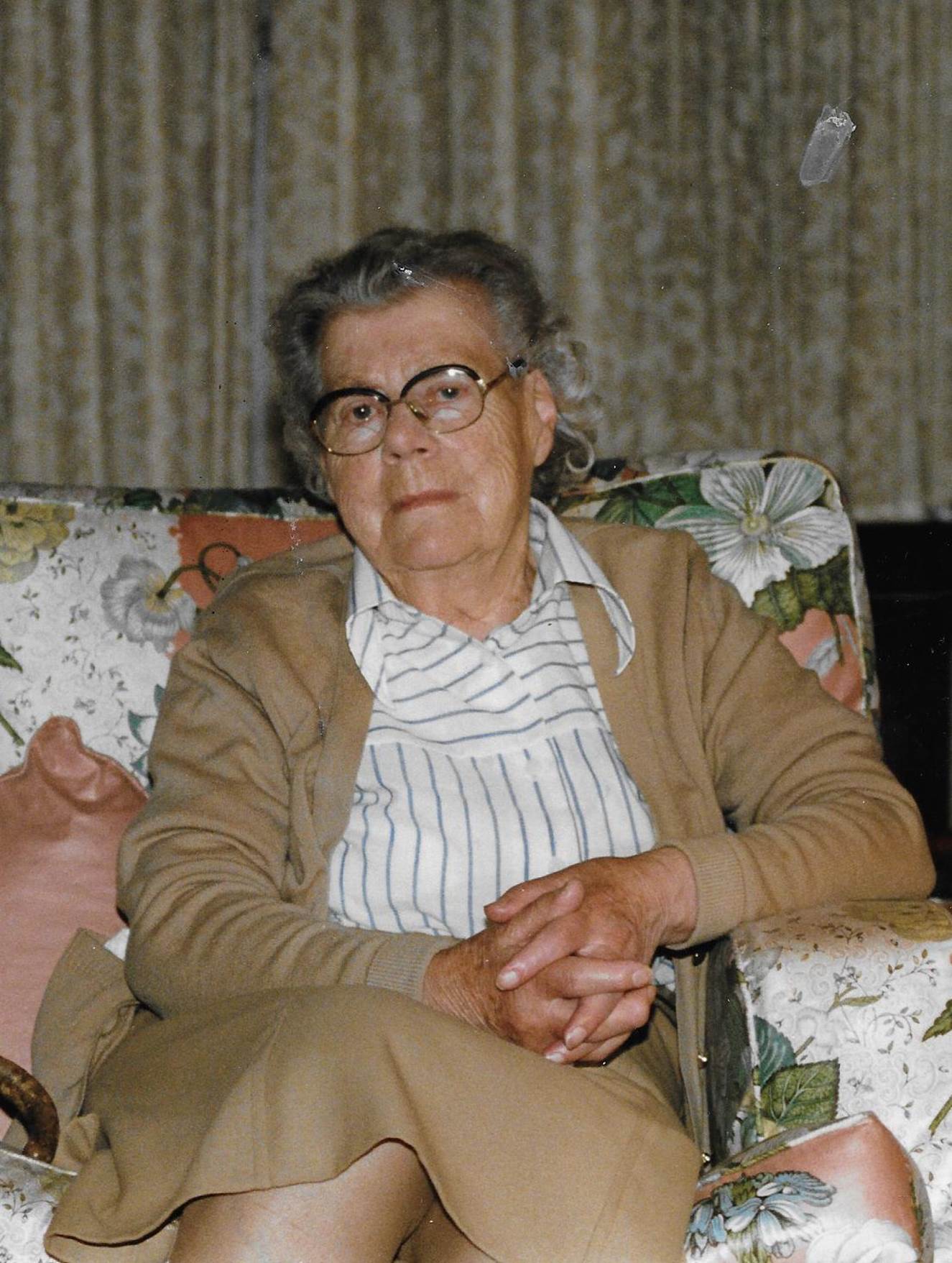
1978

Peggy and Alfred’s Golden Wedding, 16 March 1978
- Back row, Geoff, Anne and Martin, sitting Peggy, Margot and Alfred
1987
Alfred died in 1987 aged 89.
1991

Peggy with her great grandchildren,
Phill and Ian Carlisle in 1991

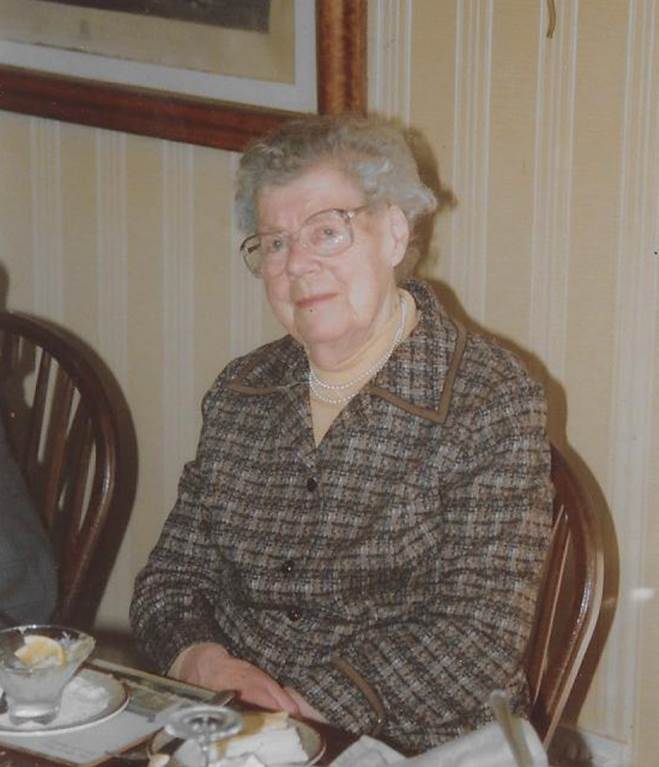

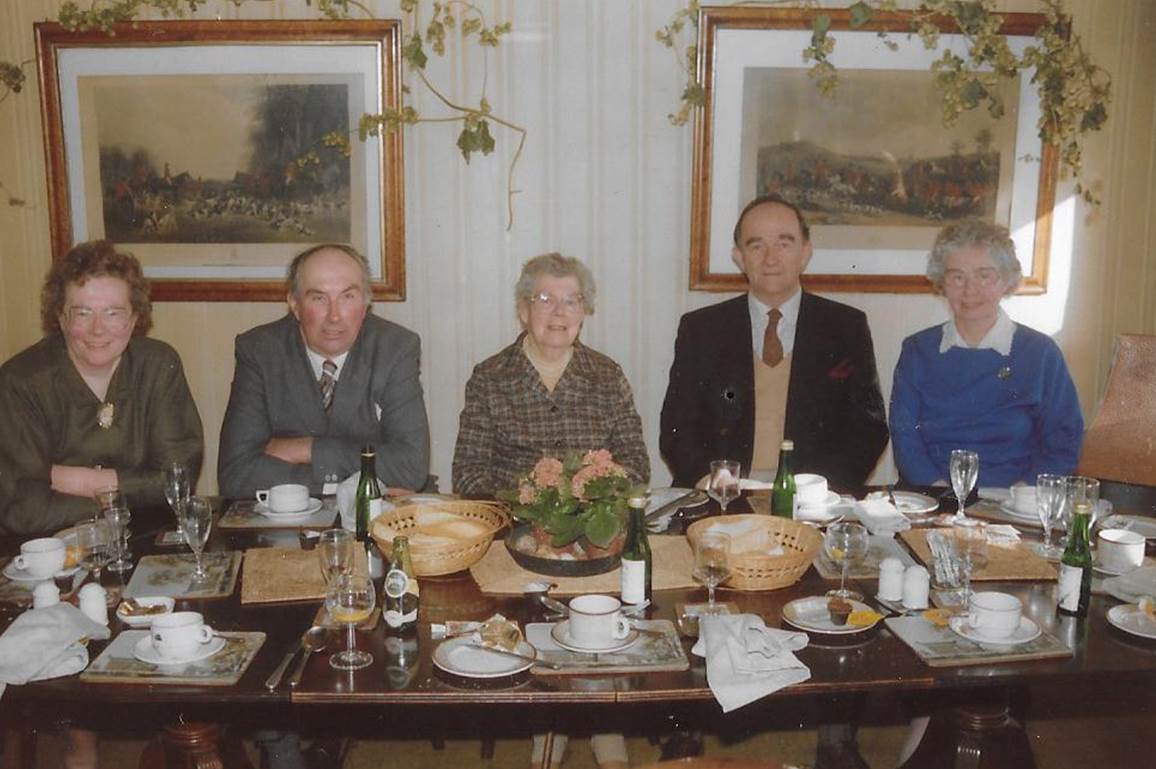
Peggy’s ninetieth birthday, 24 February
1991 h
Margot Atkinson, Geoff Farndale, Peggy Farndale, Martin Farndale and
Anne Shepherd
1996
Peggy Farndale died in Wensleydale on 17 November 1996.

Martin Farndale, her son later reflected
that:
She is remembered with great love by her
family, relatives and friends as a kind very fair person who took the greatest
interest in people and love children, especially her grandchildren and great
grandchildren. They in return loved her for she was always so very approachable
to them all. Throughout her life she was the focal point of the family and kept
them all informed about each other without any favour. She gave firm advice but
weas always there to listen, and once a decision was made whether she agreed or
not, she always supported those she loved. She played a significant part in
local affairs in Leyburn, and in the Women’s Institute and Luncheon Clubs. She
was a very good organiser. Amongst other things, she was responsible for the
street lights of Wensley. She was one of the first women drivers and started
with a Bull Nose Ford in 1922. She taught each member of her family to drive,
including her husband.
She will be sadly missed by all who knew
her, but she will never be forgotten, because she devoted her life to the good
of those who she knew and had much influence on them all.
Nigel Farndale, her grandson later
reflected that:
She lived a wonderfully full, dignified
and distinguished life that spanned, almost exactly, the turbulent twentieth
century.
I suppose any life is the sum of its
disparate elements, and those that capture the essence of Peggy for me are
watching her catch falling leaves in the autumn at Gale Bank ‘for luck’; of her
weeping when she played Mahler and Beethoven recordings when Gran was out round
the stock; of her standing somewhat eccentrically in the smoke of a bonfire
because “that’s what we used to do to keep the mosquitoes of in Canada”; of her
ability to recite Shakespeare, Keats and Sheley from memory; and of her passion
for Desert Orchid, the racehorse. The detail we will probably all remember her
for most, though, is her warm chuckle and the fact that she was never happier
than when catching up on, or disseminating news and gossip about, her children
and grandchildren.
Right to the end she retained her sense
of humour. When asked by the welfare inspector if she was happy at Wensleydale
House she said “The nurses are helpful. The food is good. The beds are
comfortable.” Then she turned to Dad and said “There wasn’t anything else I was
supposed to say was there?”

Darlington and Stockton Times, 7
December 1996
Photographs from the Twenties which are
still to be identified:


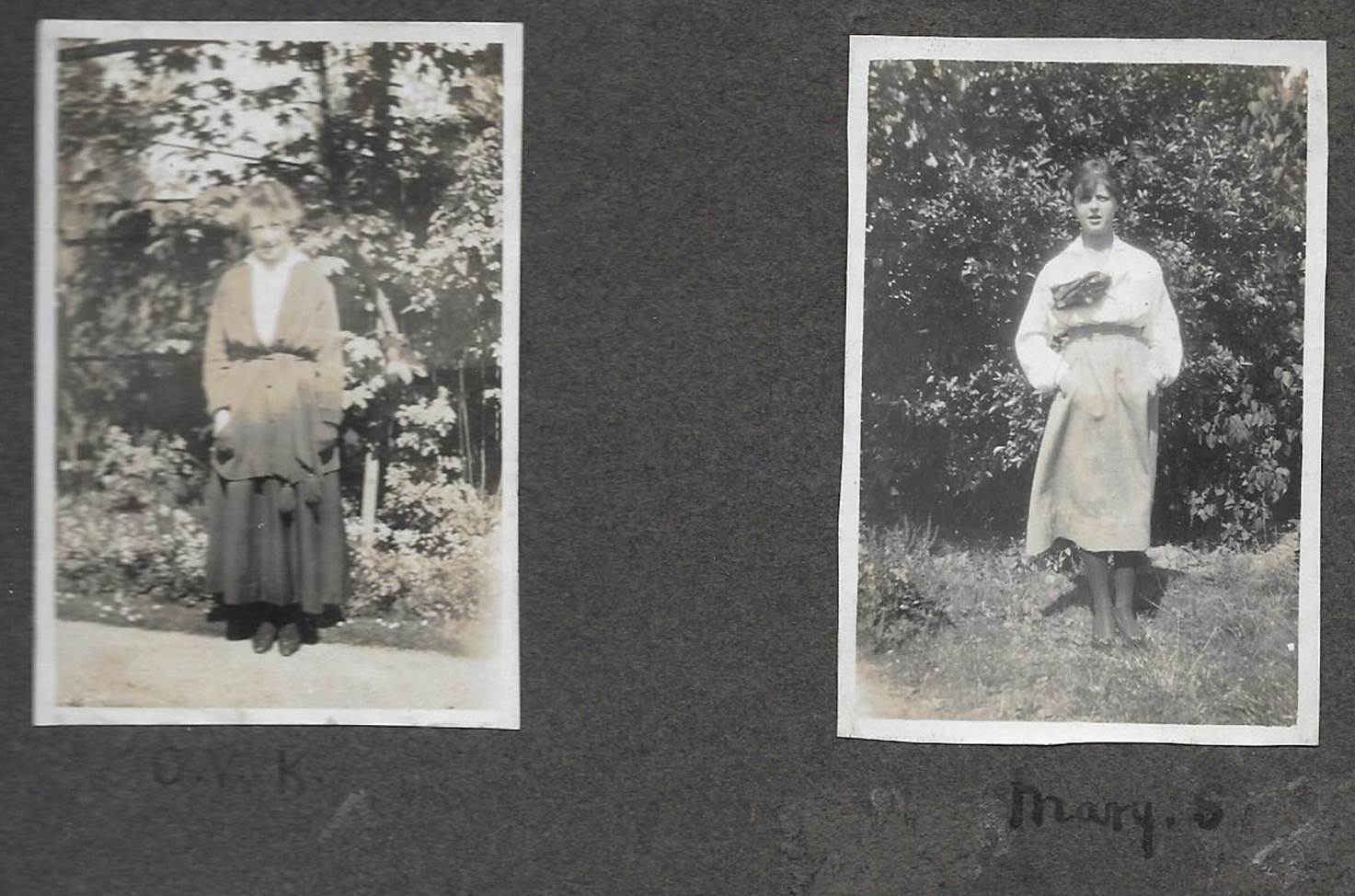
OVK and Mary S



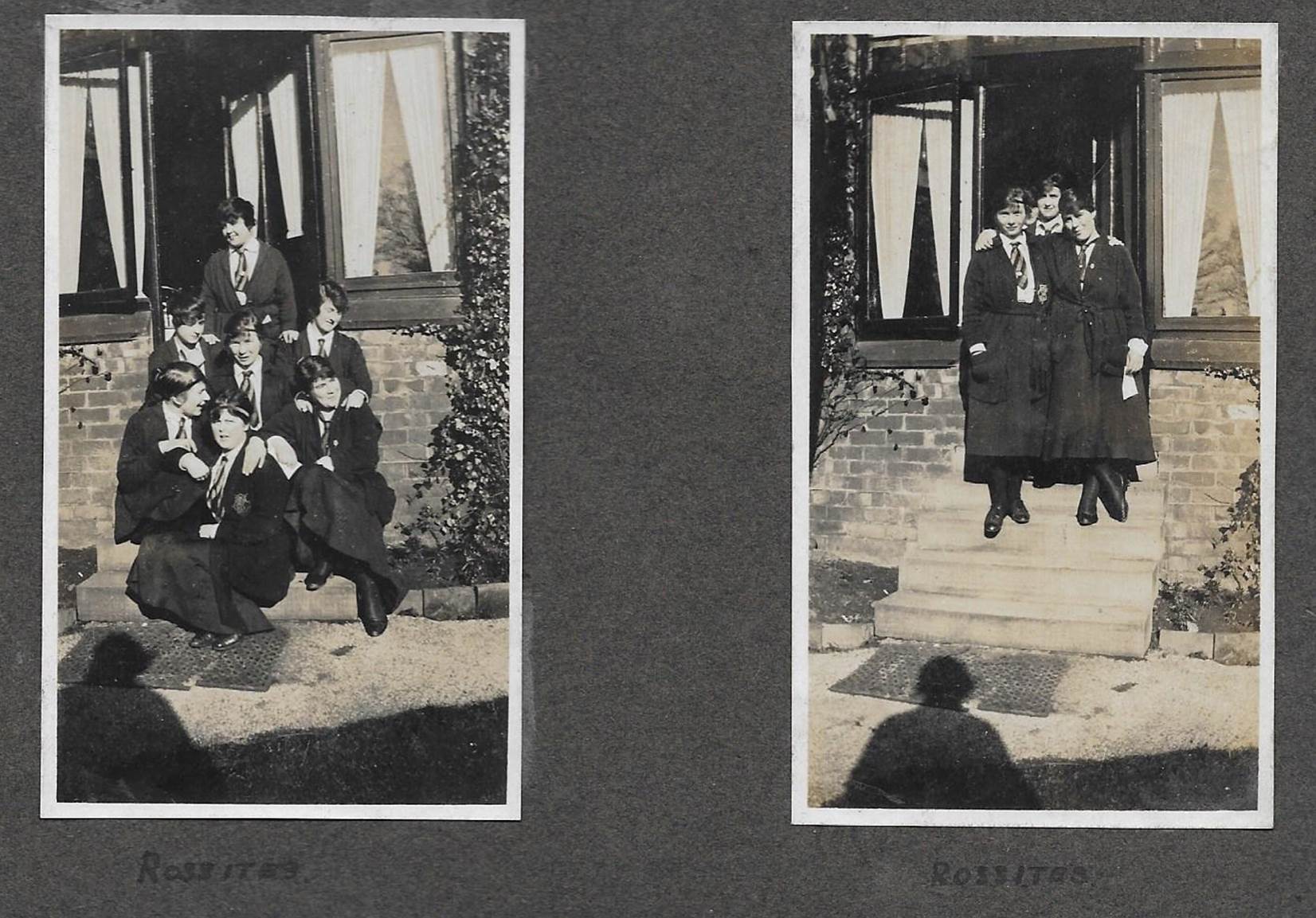
“Rossites”

“Up and Down”, Madge and “Just a wee
Trio”
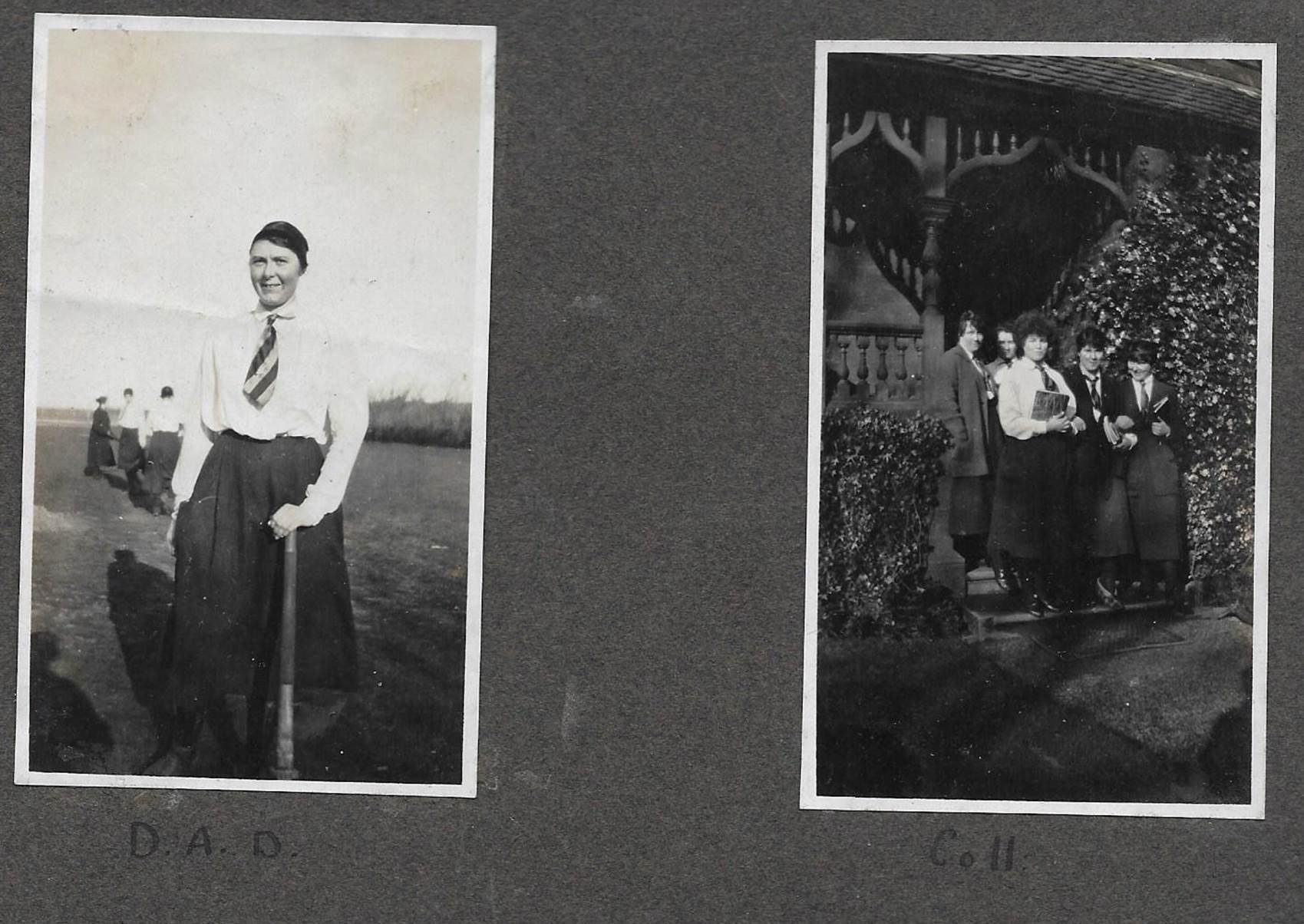
“D.A.D” and “Coll or Co II”

Hockey Groups and Buster


“Mary, Nan et Moi”, “Miss A”, “Billy”, “Nan” and “Moi”

Hope, Buster and Bunny, SPTC

Homer (and her puppies?)









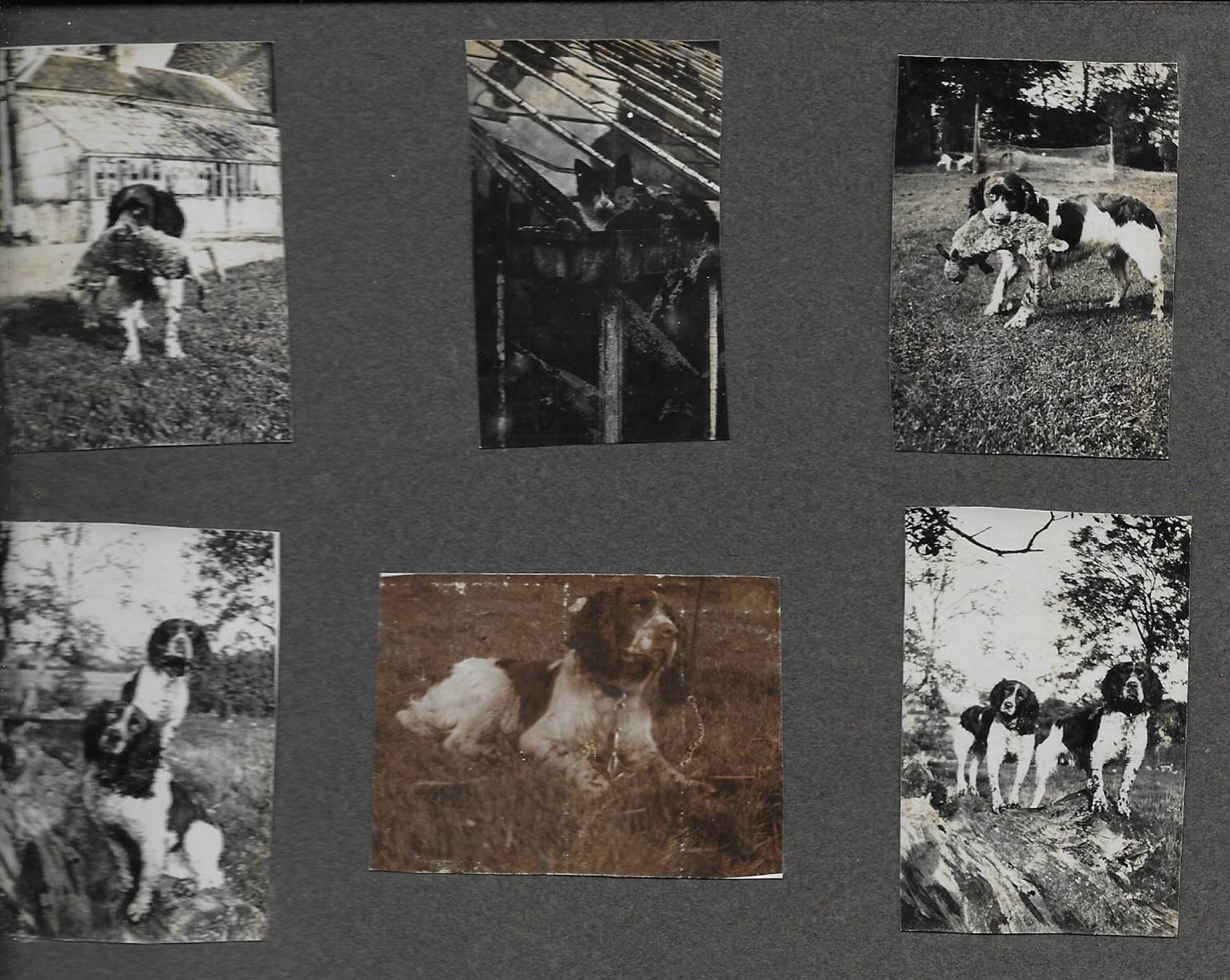


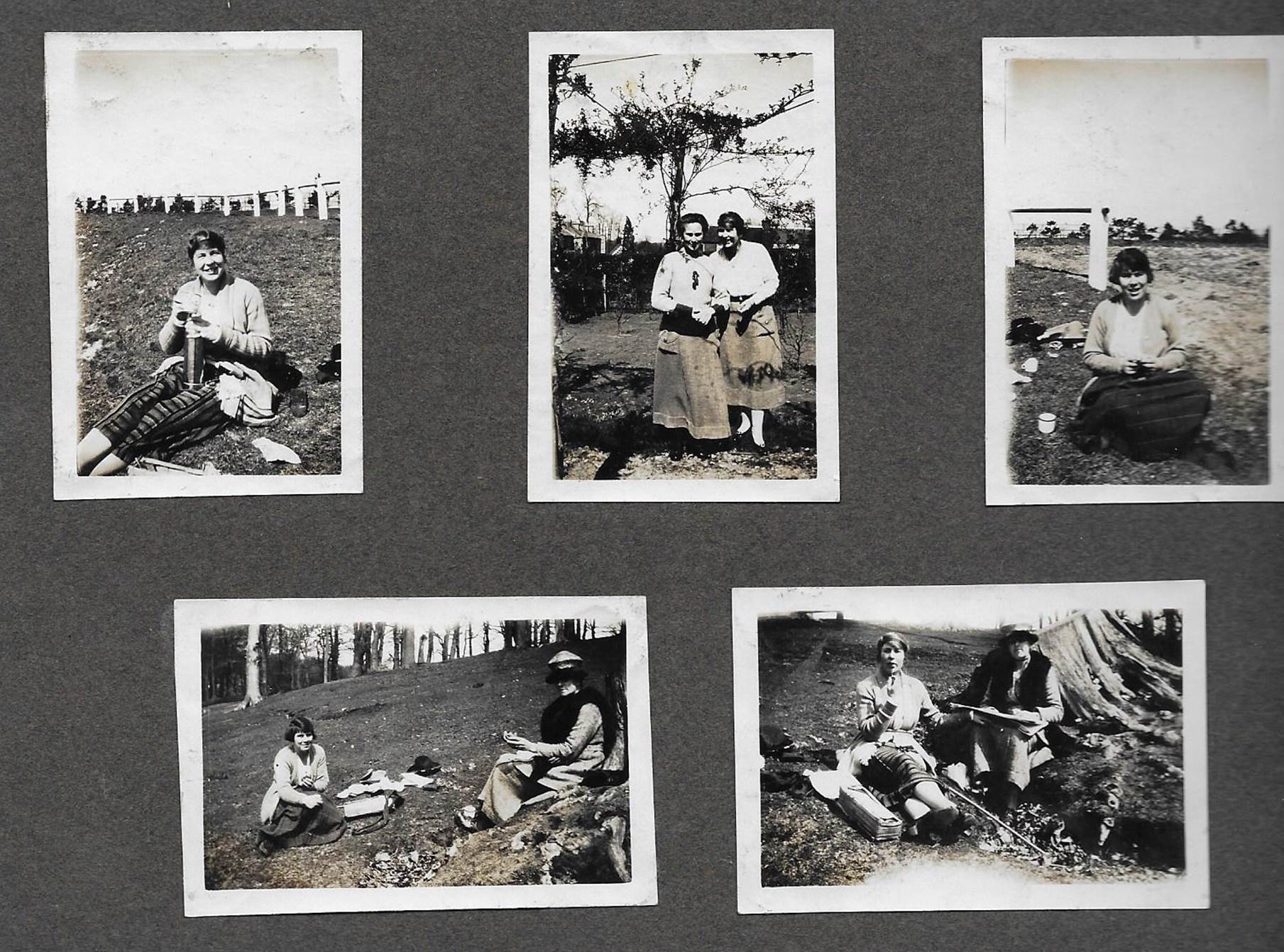


Could this be Kit Lynham wedding to
Francis Marshall, a parson?




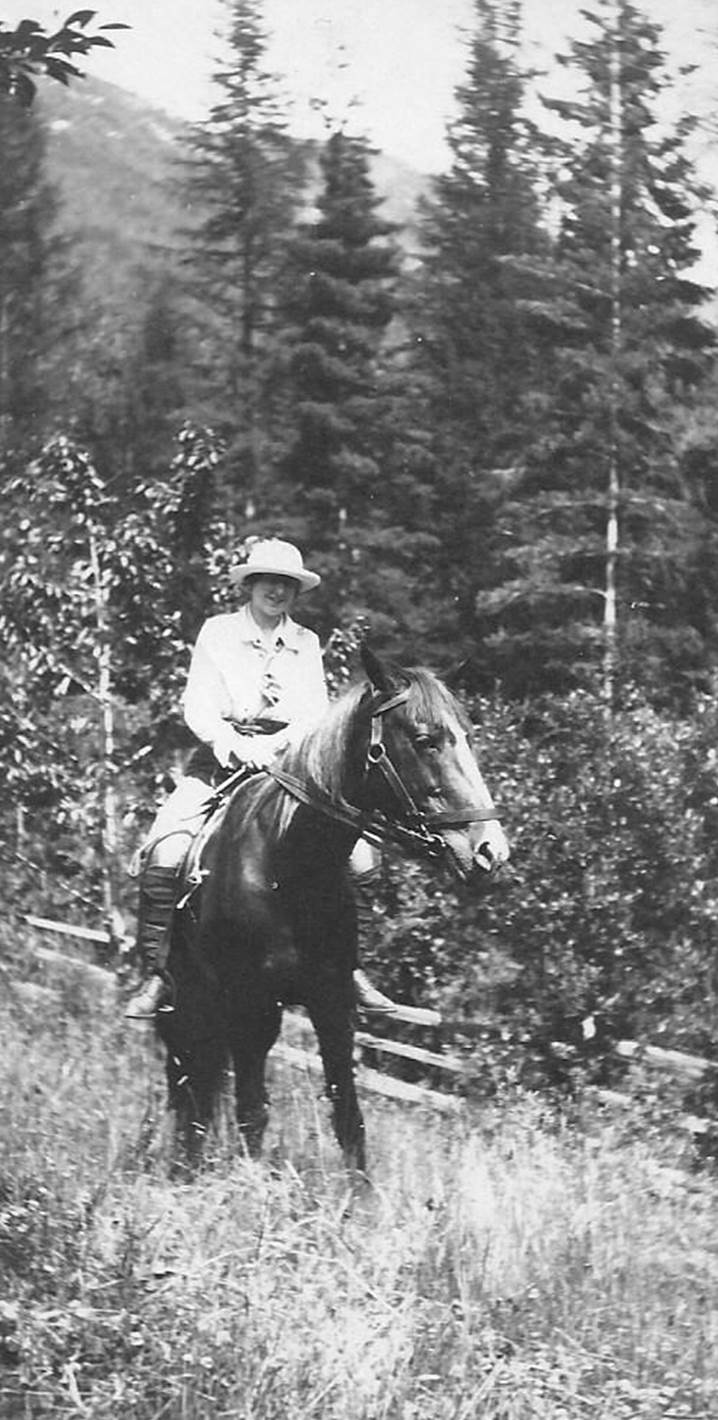
Peggy’s photos probably in the early 20s:












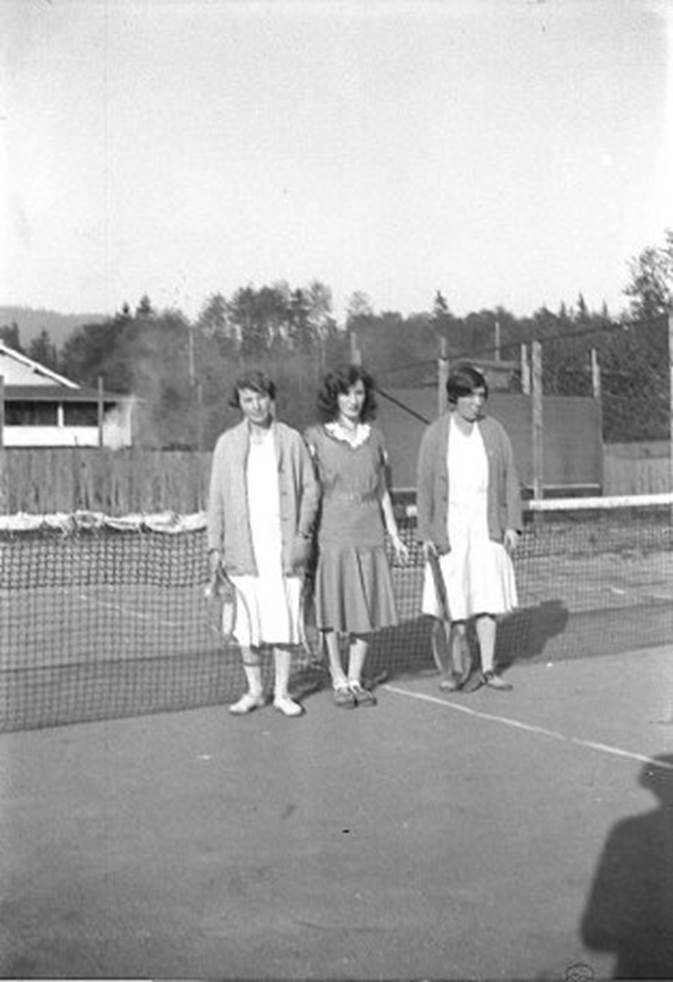



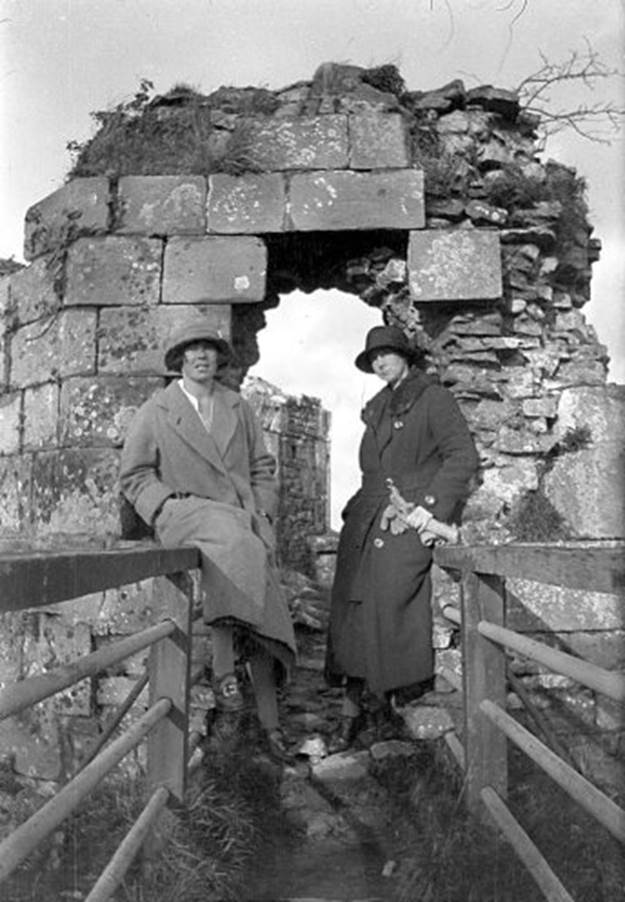
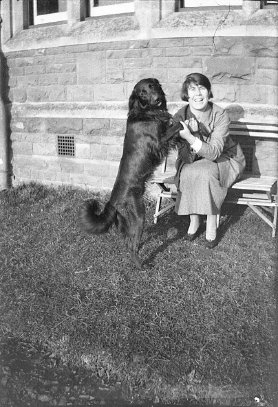



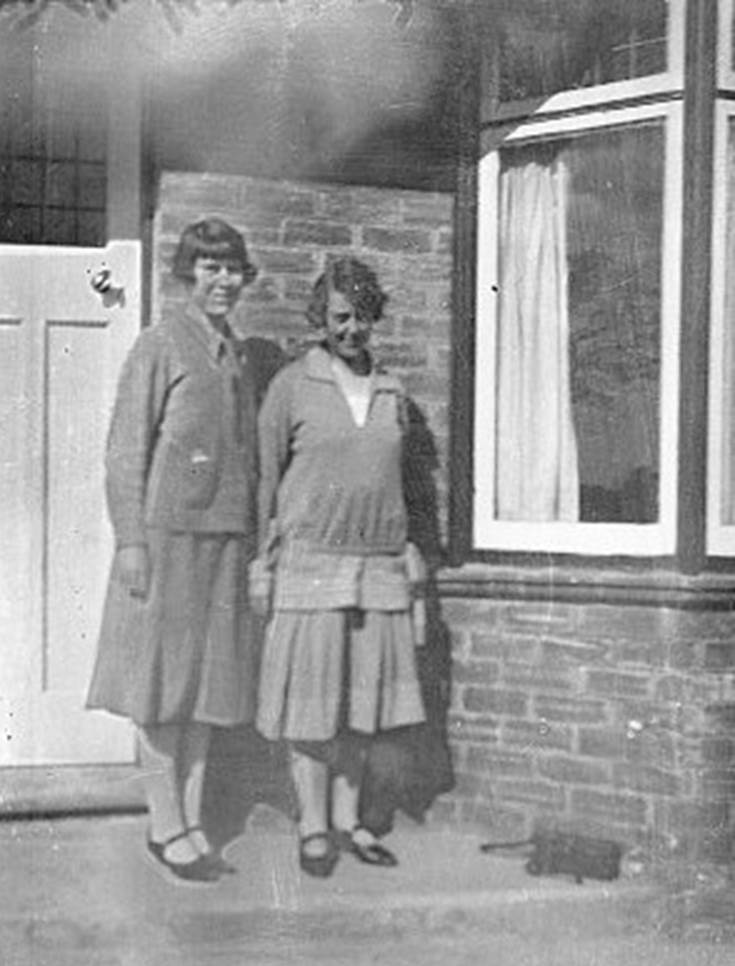

















Annotated on the reverse: “Geof,
Captain Feldon’s Groom, Captain Feldon. Hydraulic won Meyrells Hunt, Farmer’s
Race, 1929.”




